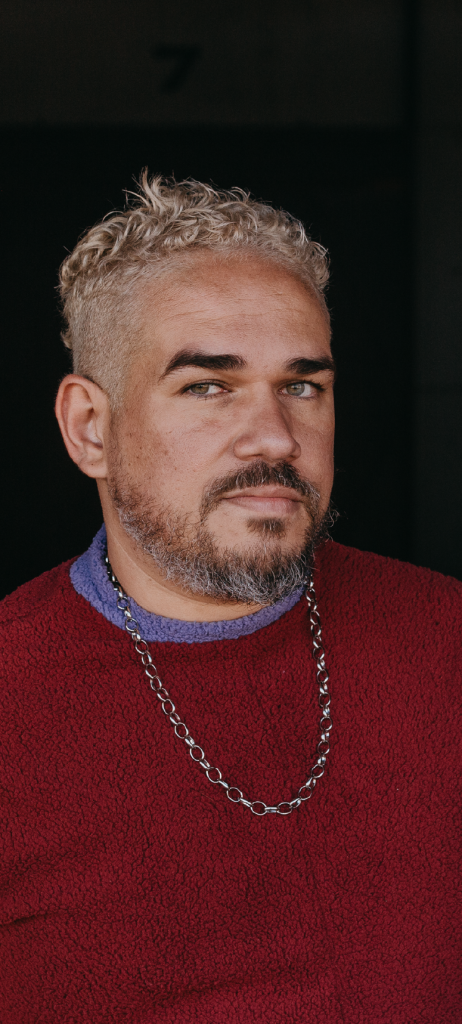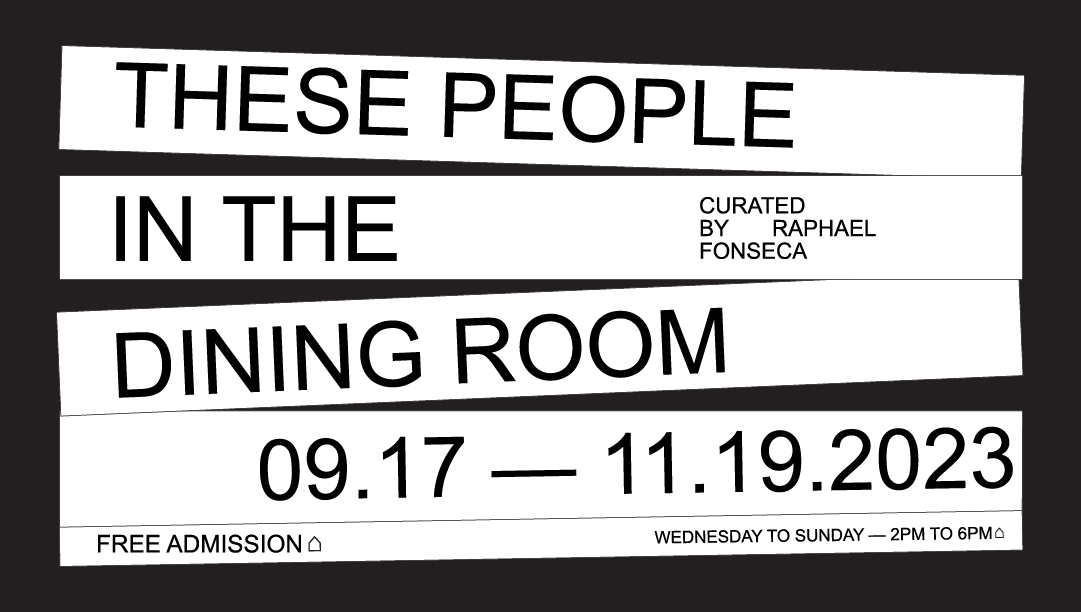Part of the official circuit of ArtRio 2023, the exhibition curated by Raphael Fonseca has works by 12 artists and causes friction between contemporary visual arts and one of the most important collections of classical art in the country.

1. The first time I visited the Casa Museu Eva Klabin was sometime between 2004 and 2007, halfway through my graduation in Art History at the Universidade do Estado do Rio de Janeiro. At that time, I was very interested in the study of the so-called classical traditions, so entering that space was like entering a portal in time. I had not yet seen such a gathering of works from such different contexts — from Ancient Egypt to the French painting production of the 20th century, from English portraits of the 18th century to images made by native peoples from the territory we now call Peru. The articulation between collecting and the domestic sphere certainly stood out. Upon leaving the house once inhabited by Eva Klabin, however, the shock with the “city-wonder-purgatory-of-beauty-and-chaos” happened in an aesthetic way: the forty-degree Celsius heat, the noise of cars that almost flew by, the pollution of Lagoa Rodrigo de Freitas and an often-deserted landscape that tends to place us between Edenic pleasure and fear of empty public spaces. Right in front of this house there is a bus stop; currently the only bus that stops there is the 473, which connects Copacabana to São Januário, in the North Zone of the city. Ten minutes from the house, up Avenida Henrique Dodsworth, we arrive at the Cantagalo subway station. From there, in about an hour, you can reach not only the Tijuca neighborhood, but also areas generally seen as “suburban” — that’s the long way towards Pavuna. On the street, a thought struck me: I needed to prepare for the nearly two-hour journey to Jardim Boiúna, a sub-neighborhood of Taquara which, in turn, is a sub-neighborhood of Jacarepaguá, in the West Zone of the city. As much as the names of Tintoretto, Donatello, Fragonard, Pissarro, Taunay, Reynolds and Lawrence were close to my academic studies, I would never be — and never will be — the great-nephew of the Baron of Tefé (like Henrique Dodsworth) or a former owner of land in the Lagoa region (like Rodrigo de Freitas). Between Rua dos Biologistas and the pages of The story of art, by Gombrich, there is an immeasurable distance.
2. Almost two decades after my first visit to the house-museum and following many existential, geographic, professional and economic changes, an invitation to develop a curatorial project for this place arrives. After some reflection, it seemed urgent to give space to artists who were increasingly institutionalized; we imagined that this house could be a space of experimentation, of trial and error before the public eye. Along with this fact, on a self-analytical basis, why not invite other people who were also raised in peripheral contexts? What if this exhibition was a meeting point for those who did not profit from the wealth of the barons and viscounts of our country’s colonial history, but instead inherited and articulated in different ways the wisdom, memory and labor of a working class who sweats (and drips) commuting by public transportation? Bearing in mind the ample space of the house — which includes its façade and yard — it seemed like a good idea to occupy all its rooms and revise the narratives Eva created. Whether for the varying intimacy degrees of the rooms — the living room is not as private as the bedroom —, or for the artworks displayed and environments created in each of them — from the Chinese Room to the boudoir –, different are the decibels of their echoes on our bodies. Coming from the working class — from suburban neighborhoods of Rio de Janeioro such as Anchieta, Campo Grande, Realengo, Santíssimo, Seropédica, Vila Valqueire, or from the poorer areas of other Brazilian cities (Anápolis, Belo Horizonte, Cabo Frio, Porto Alegre, Salvador and Santo Antônio de Jesus) —, the artists gathered here deal in their research with notions of domesticity, time, fiction, education, privilege and physicality. Their works points to contrasting but dialogical directions. While some artists dialogue with the cultural dimensions of the rooms in the house-museum, others propose more formalistic relationships and/or conversations with Eva Klabin’s collection. If, for centuries, many people from the aristocracy had the freedom to experiment with being visual artist, in the way they wanted, why should we expect anything different from those who come from the working class? Far from identity essentialisms, we would rather confuse than present something illustrative; it is important that these twelve artists overlap and contradict each other narratively.
3. How to give a title to this experience of occupying the Casa Museu Eva Klabin? Perhaps due to the death of Rita Lee, this verse — written by Caetano Veloso and Gilberto Gil in 1968 and included in the first Mutantes album — came to me as a glitch: “these people in the dining room”. Released during the military dictatorship and provocative in its approach to the “traditional Brazilian family”, the song “Panis et circenses” seemed a perfect fit. The phrase denotes an otherness: saying “these people in the dining room” means that there is at least one subject who observes them. Given the historical context, this otherness can be quickly associated with a generational gap or with the polarization between the Brazilian left and right. But perhaps, as an exercise to broaden these words, we can look at them and think of other socioeconomic, educational and racial layers. What if we heard maids, informal workers and factory workers — mothers and fathers to many of the artists gathered here — say this phrase? What if “these people in the dining room” referred to subaltern bodies that, in an unprecedented discursive and institutional — as well as marketing and mediatic — turn, are under the spotlight in cultural centers, art fairs, galleries and museums of visual arts in Brazil and around the world? Dear readers, do not be alarmed; you can continue to use your smartphones or to clink your soup spoons. We just came to show for a few months that when you give space to people who never had the privilege of having a dining room, afternoon tea can taste different.
Raphael Fonseca – curator
Was born in 1988 in Rio de Janeiro, Brazil, and lives in Denver, in the United States. A researcher at the intersection of curatorship, art history, criticism and education, Raphael Fonseca holds a PhD in Art History and Criticism from UERJ. He has been a curator of modern and contemporary art at the Denver Art Museum since 2021. Fonseca is also Chief Curator of the 14th Bienal do Mercosul (Porto Alegre, Brazil, 2024); Curatorial Consultant for Prospect 6, New Orleans Triennale (United States, also to be held in 2024). Alongside Renée Akitelek Mboya, he curated the 22nd Bienal de Arte Contemporâena Sesc_Videobrasil (São Paulo, 2023). Between 2017 and 2020 he served as curator at Museu de Arte Contemporânea de Niterói (MAC Niterói).
Ministry of Culture & Klabin S.A. present
THESE PEOPLE IN THE DINING ROOM
CASA MUSEU EVA KLABIN
EMERITUS CHAIRMAN
Israel Klabin
EMERITUS BOARD MEMBER
Fernando Henrique Cardoso
CHAIRMAN
José Pio Borges
DIRECTORS
Sérgio Brilhante de Albuquerque
Stela Klabin
CURATORIAL COMMITTEE
Lea Klabin [chair]
Celso Lafer
Genny Nissenbaum
Hugo Barreto
João Afonso Assis
Katia Mindlin Leite Barbosa
ADMINISTRATOR
Vanderléa Regina de Paiva
CULTURAL MANAGMENT
Heloisa Vallone
MUSEOLOGY
Ruth Levy [senior museologist]
Diogo Maia [museologist]
Fabiana Vidal [assistant museologist]
EDUCATION PROGRAM
Carlos Miguez [coordinator]
Gabriel Caires [assistant]
Bernardo Novo [intern]
Carol Ferrniz [intern]
Thais Seixas [intern]
PRODUCTION
Juliana Cunha [coordinator]
Nathalia Araujo [assistant]
Sofia SK [assistant]
COMMUNICATION
Julia Ribeiro [coordinator]
Daniel Garrido [senior analyst]
Andrea Caldas [advisor]
Suzane Santos [intern]
ADMINISTRATION
Gabriel Mendes
Samara Soares
MAINTENANCE
Maurício Costa e Silva [coordinator]
Giuseppe Barros
João Batista de Oliveira Sousa
Rogério Santiago
Ronnie Sousa
EXHIBITION
CURATOR
Raphael Fonseca
DESIGN
ESTUDIO CRU
PRODUCTION
Rodrigo Andrade [AREA27]
PROOFREADING
Rosalina Gouveia
ENGLISH TRANSLATION
Alice da Palma
EXHIBITION INSTALLATION
KBedim
LIGHTING
Julio Katona
PHOTOGRAPHY
Mario Grisolli
PRESS OFFICE
A2 Comunicação
PR & INFLUENCERS
Atômica Lab
AKNOWLEDGMENTS
Asfalto
Aura Galeria
Galeria Athena
Galeria Leme
Quadra
Ludwig Danielian
WEBSITE
Studio Oya
FREE CLASSIFICATION



